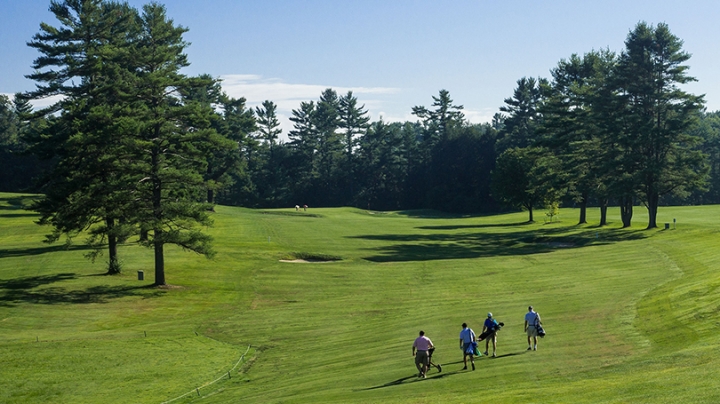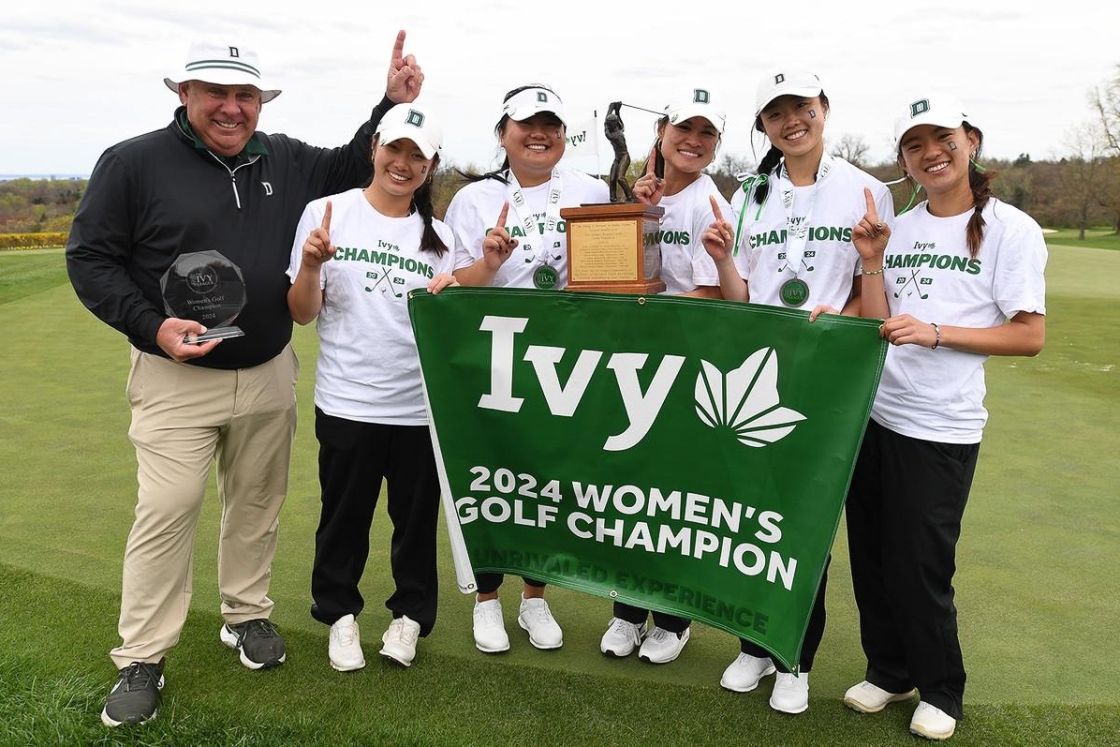The Golf Course Advisory Committee heard suggestions on the future of Dartmouth’s golf course at a listening session this week. The session, and another to be held in May, are part of the committee’s plan to collect ideas and concerns about the future of the golf course.
“It is very important that we hear from those who use the course and are interested in its future as we go through this process,” said committee Chair Charles Wheelan ’88, a senior lecturer and former varsity golfer at the College, after the session.
The session, attended by more than 120 people, many of whom sat on the floor or stood at the back of a small classroom in Moore Hall, was an opportunity for members of the community to share their thoughts about the future of the College-owned and operated course, which has been losing members and operating at a loss for the past four years.
The advisory group was formed in February to explore scenarios for the future of the course, and will give its final report recommending a course of action to President Phil Hanlon ’77 in the spring. The matter will then go to the board of trustees in June.
The committee’s goal is to present President Hanlon with “what is feasible and what is not,” Wheelan told the audience at the session.
“Our job is to make the College happy with this asset and the way it’s operating,” he said.
Ideas for changes include constructing an easier 9-hole course as part of the 18-hole layout; building a new clubhouse that could be used year-round for income-generating events such as wedding receptions; using golf course property across Lyme Road to reconfigure the course; rearranging the course so that an existing bridge doesn’t need to be rebuilt; and adding other golf-related activities to attract young people to the venue.
Rich Parker, the Bill Johnson Head Coach of Men’s Golf at Dartmouth, said the course could be redesigned to be more player-friendly. “This is a gem,” he said.
“I really appreciate the effort to make this work,” Bethany Burns ’20, a member of Dartmouth’s women’s golf team, told the committee.
There are three scenarios under consideration. The first would continue operation of the 18-hole course, supported by dues, greens fees, and other current revenue, with steps identified to reduce costs and limit the financial burden on the College.
The second would be to operate a reconfigured 18-hole course, reducing the financial burden by increasing dues and greens fees and identifying new sources of revenue. Any capital investment in this scenario would not come from College operating funds.
Information presented to the audience shows that the $49 greens fee for one-time public use of the course is significantly less expensive than fees at golf courses at Colgate, Cornell, Williams and Princeton. The fees range from $75 at Cornell to $135 at Princeton. An annual membership at Dartmouth costs $1,599 for an adult. It is $1,500 at Cornell, $1,750 at Colgate, and $2,868 at Williams. The Princeton club is private, and the membership fee wasn’t shown.
The third scenario ends operation of the course. An indoor golf practice facility would be built, and options would be developed to fund the facility and grounds maintenance.
Peter Williamson ’12, a former Dartmouth golfer who is now a professional golfer, said there could be three redesigned 6-hole sections of the course, each with a different type of play.
“To make this a community course is one of my biggest goals,” said Williamson, whose father, Doug Williamson ’85, DMS ’93, is a member of the advisory committee. The younger Williamson added that a new clubhouse could be a year-round facility, with banquet and classroom space, a restaurant, pro shop, and golf simulators. He said adding other sports, such as soccer-golf, could be a way to get more young people involved in golf.
Another member of the audience who is involved in the Upper Valley Curling Club suggested developing a curling venue on the course for winter use. Wheelan said after the meeting that the committee will pursue ideas that provide the best options for golf and recreation on the property.
At previous meetings, committee members have reviewed the history of improvements and repairs at the site, the course layout and land boundaries, zoning, and wetlands. The group has considered how future plans could affect recreational use of the land, which includes use by hikers, runners, cross-country skiers, and many who spend time in the adjacent Pine Park recreation area.
Wheelan said the advisory group’s next meeting will be about financial matters related to the golf course.
The committee is continuing to take public comment by email at golf.course.advisory.committee@dartmouth.edu. Reports, progress updates, and other information can be found on the committee’s website.
Susan Boutwell can be reached at susan.j.boutwell@dartmouth.edu.

